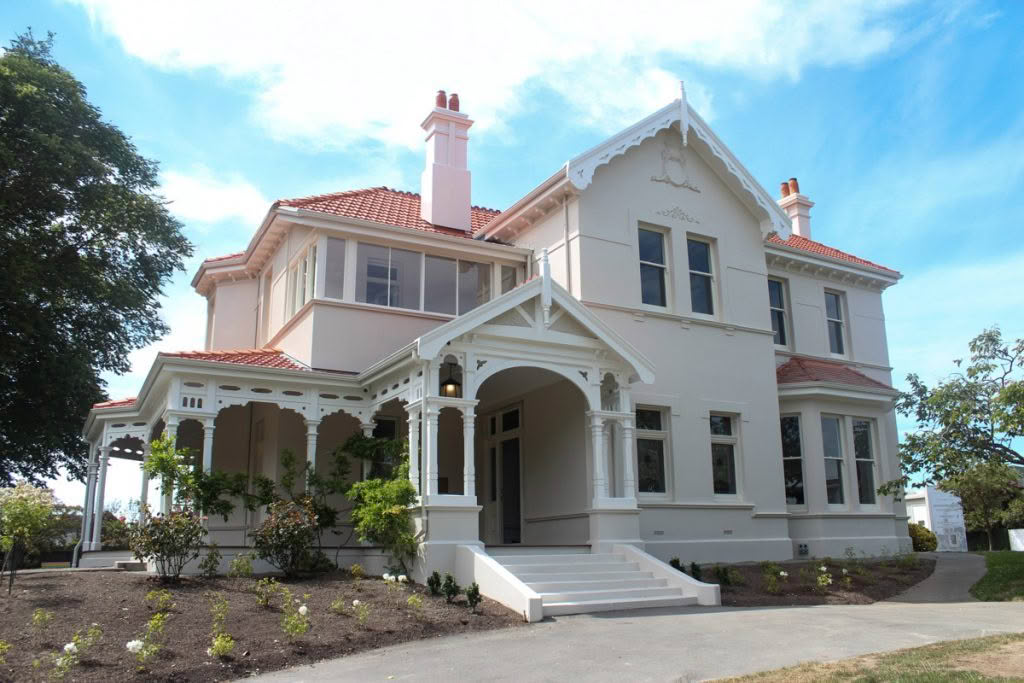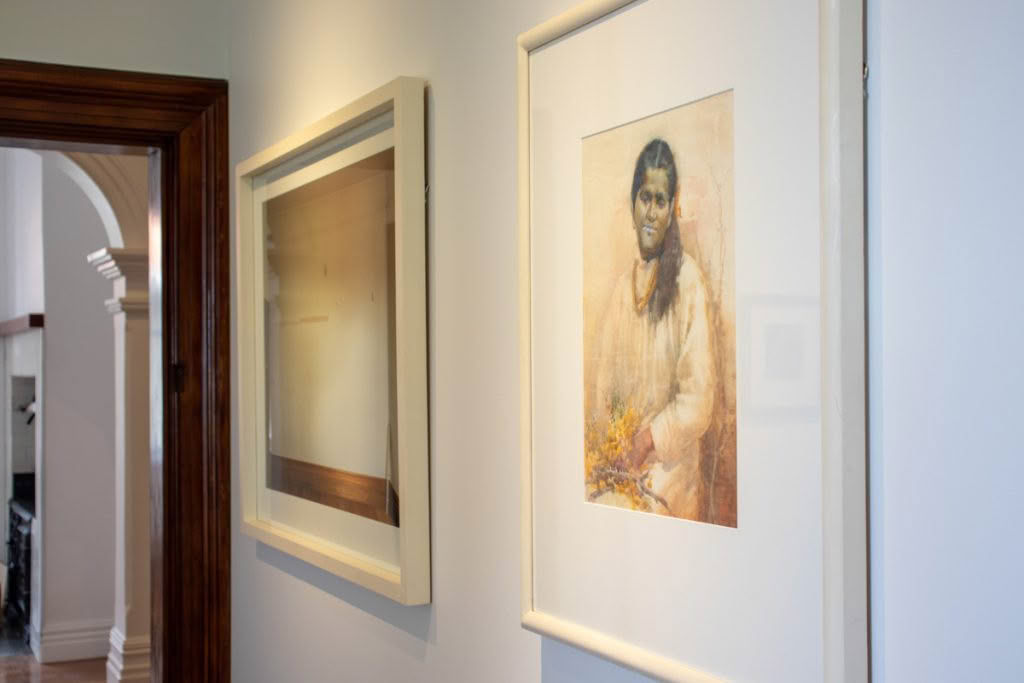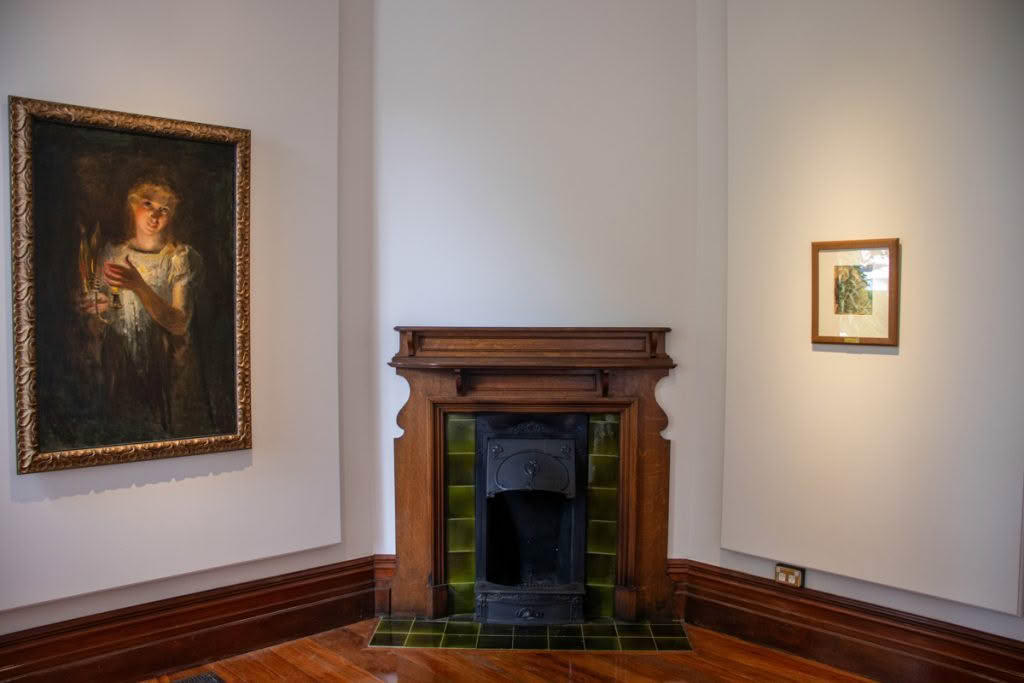House of welcome
After nearly eight years of closure, Timaru’s Aigantighe Art Gallery has reopened. The stunning heritage building has been restored to its former glory – a crowning jewel of the arts to delight visitors from far and wide.
Words Belinda O’Keefe

For newly reopened Aigantighe Art Gallery in Timaru, it’s all about the name. Aigantighe (pronounced ‘ay-gan-tie’) is a Scottish-Gaelic word meaning ‘house of welcome’, and the beautifully restored building in Timaru’s Wai-iti Road is exactly that.
‘We like to think of ourselves as the home of the arts in South Canterbury,’ explains Exhibitions Curator Izzy Hillman. ‘It houses a special collection held in perpetuity for the people of Timaru, and New Zealand.’
The art gallery sits on the original land plot of the heritage house, built in 1905 as a townhouse for Alexander and Helen Grant, who emigrated from Scotland and farmed at Gray’s Hills station near Burkes Pass from 1881. They moved to Timaru for their retirement, and lived in the homestead for 50 years. Alexander died in 1920 at the age of 89, and Helen remained in the home until 1955, when she died at the grand age of 101. Her children gifted the house and land to the council, stating that the house be gifted to the people of Timaru as an art gallery, otherwise it was to be demolished.
And so, on 16 Aug 1956, the Arts and Crafts-style home was officially opened as an art gallery. In 1978 an extension was built onto the homestead to house the growing collection
of artworks.
‘The domestic space really echoes the history of the Grant family,’ explains Izzy. ‘It was the catalyst for the idea of an art gallery and the original site chosen to host what was becoming the civic collection of Te Tihi o Maru, Timaru, which didn’t have a home.’ Artworks were gifted to the City Council at the time, but without a dedicated gallery, some were stored in the old Town Hall basement. ‘It’s said that Goldies [works by renowned Kiwi artist Charles Goldie] were found hidden in the basement, and when the gallery opened, those works came up to the heritage house.’
The homestead was a space reserved predominantly to house the historic art collection, showcasing significant pieces by iconic New Zealand artists – the likes of Colin McCahon, Charles Goldie, Doris Lusk, Frances Hodgkins. ‘The gallery collected works from artists who were contemporary artists of their time, when other galleries weren’t collecting them,’ says Izzy.
Why Visit?
Make an easy, free stop on your journey through the South Island and discover a hidden gem among its many attractions. Step back in time as you explore the beautifully restored heritage house.
Admire the works of iconic New Zealand artists, with pieces from a permanent collection of over 2,000 artworks on display, rotating regularly to keep things fresh.
Stroll through the expansive Sculpture Garden, spanning more than two acres, where you’ll encounter a stunning variety of flora and fauna. From the annual roost of monarch butterflies and playful fantails to a brilliant display of magnolias and summer roses, there’s always something new to enjoy.

In 2017, Aigantighe was closed following a seismic assessment which found the structure to be at only 10 per cent of the New Zealand building standard. And so the work began, to structurally strengthen, preserve and enhance the historic building to its former glory. During the restoration process the gallery operated out of the 1970s extension building, and after seven and a half long years, it finally reopened in December 2024, ready to showcase its stunning transformation.
It was important to preserve and highlight the building’s unique heritage features for future generations. The original parquet floors, ornate tiled fireplaces, carved mantles and leadlight stained-glass windows have been restored.
Jessie Wigley (the daughter of Helen and Alexander Grant) played a big part in the original decoration of the home, selecting Arts and Crafts features and creating a decorative element to the story. ‘She was very involved in transforming the house into an artistic haven, making decisions for furniture and textiles and filling the space with pieces that reflected her own journey as an artist,’ enthuses Izzy.
In addition to the historic homestead is the Sculpture Garden. Over two hectares, it includes both New Zealand and international sculptors’ work, and some significant limestone pieces from an international stone carving symposium which was hosted locally in the nineties.
‘What really makes Aigantighe Art Gallery unique is that 95 per cent of the gallery’s collection today has come from bequests and been bought through donations,’ Izzy says. ‘It began from one family’s legacy collection to other families in the community donating works to build it up into a significant public collection. It’s all been fed into by the public themselves – it’s grassroots and community fed, which makes it quite special.’


